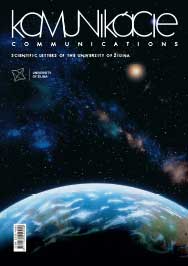Maintaining Inter-Vehicle Spacing - Using Synergetic Effects between Rail and Road Traffic!
Maintaining Inter-Vehicle Spacing - Using Synergetic Effects between Rail and Road Traffic!
Author(s): Günter Hertel, Hans-Eberhard Siebert, Richard VogelSubject(s): Transport / Logistics
Published by: Žilinská univerzita v Žilině
Keywords: Traffic; Inter-Vehicle Spacing; Maintaining; Railroad;
Summary/Abstract: Now as ever, transportation services are a decisive criterion of an economy. This constitutes the background for dealing with the various routing and protection principles for the two important land-based traffic systems: namely, road and rail transport. The objective is to determine how the two systems could benefit from the respectively chosen approaches to a solution and which future operating concepts this makes possible. Whether in rail or road traffic, inter-vehicle spacing directly effects several quality criteria of the transport process, and vehicle throughput. The various theoretically possible and practically applied principles for maintaining inter-vehicle spacing will be described and assessed with regard to occupied time, safety, and throughput. Today, various principles are used in both system which is attributable in part to the historical development of the system but also to the possibility of supporting the system through technical assistance systems. For both systems the possible maximum traffic throughput is considered depending on maintaining inter-vehicle spacing. Synergy potential can be used through an interdisciplinary approach to detection and classification of traffic scenarios. In the future, vehicle electronics will be developed with the same objectives and similar outline conditions. Rail traffic then can profit from the series effect of road traffic and thus reinforce its market position through affordable solutions. Identical concepts in the field of vehicle-based route information (digital map) will permit joint solutions. In the field of convoy formation and automatic, driverless operation, joint studies make sense when it comes to longitudinal guidance and vehicle protection.
Journal: Komunikácie - vedecké listy Žilinskej univerzity v Žiline
- Issue Year: 1/1999
- Issue No: 4
- Page Range: 17-28
- Page Count: 12
- Language: English

